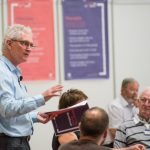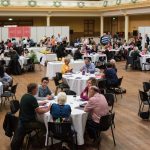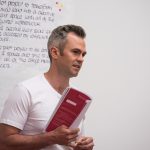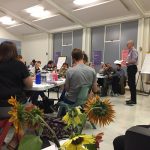
How to build a strategic plan that really meets the needs of your stakeholders
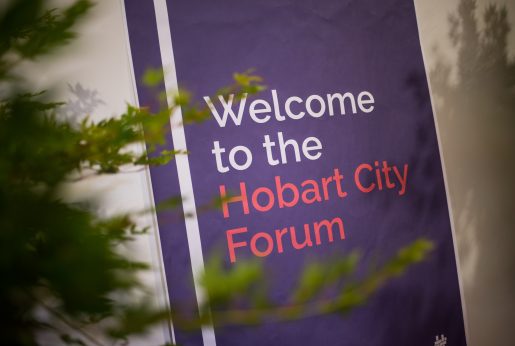
A strategic plan is a vital tool for any business or organisation. It captures the needs and opportunities for the organisation and sets the future direction to meet medium- and long-term goals. Essentially, a strategic plan sets an organisation up for success.
However, for many people running a business, finding the time to develop a strategic plan is a challenge, particularly where there are multiple stakeholders to consult and a broad range of service offerings to deliver.
Under a recent change to the Local Government Act, the local councils in Tasmania are required to develop a 10-year strategic plan. The City of Hobart decided to use this opportunity to develop a long-term vision and took a bold approach with extensive community consultation. WLF Consulting were delighted to be a part of the team working with the City of Hobart on this project.
How did the project come about?
A strategic planning process that is driven entirely by existing internal staff runs the risk of seeing an organisation stagnating – even the best people can have a somewhat blinkered perspective when they are caught up in the day to day.
The City of Hobart recognised the value in engaging professionals with specific expertise in strategy and sought national interest through an open tender. WLF Consulting initiated a collaboration with local marketing firm The20 and local management consulting firm Hexagon Consulting. We all agreed that none of us could bring all the capabilities and capacity required alone, but collectively could provide a competitive submission.
From our side, WLF Consulting brought a wealth of experience with previous successful community engagement projects; The20 brought communication and presentation expertise; and Hexagon contributed broad ranging consultation and planning skills. As a consortium, we could provide City of Hobart with:
- Diversity
- Harnessing the “Wisdom of the Crowd”
- Independence to the process
- An open process
- The absence of defensiveness regarding past council actions
The process
The City Vision Project was a whole-of-council initiative, commissioned by General Manager Nick Heath on behalf of the Councillors. The process was driven by the consortium team together with a small council project team.
As the City of Hobart represents and serves the people of the municipality, involving the community was a critical part of the process.
The project ran from August 2017 till July 2018 and incorporated the following key activities to research and gather information from stakeholders:
- Talking to Hobart interviews
- Hobart City Forum
- Stakeholder workshops
- Online questionnaire
- Community panel workshops
We engaged Todd Babiak from Canada, a recognised world leader in the development of City Stories. Todd worked with us in the first phase of the project to develop a Hobart Story incorporating content from in-depth interviews with over 200 leaders, residents and business owners in the great Hobart area.
Young community leaders: Migali Short, Sam Watson and Atak Ngor
Three local young community leaders presented the Hobart Story at the City Forum, a public event with 116 participants from all walks of life, social demographics and age groups. The City Forum was a core component of the community engagement process, and the participants worked together to develop guidelines on how we build the future of Hobart. The outcome of this was a set of pillars (goal areas) and a list of principles.
Hobart City Forum – 116 participants volunteering their time and thoughts, and representing a broad cross section of the community
The workshops with stakeholders enabled city leaders to provide feedback on the Hobart Story as well as the opportunities and challenges within each of the for pillars identified at the City Forum.
The next step was a series of workshops with a Community Panel, comprising 46 diverse members of greater Hobart. Through these workshops, recommendations were developed for each of the new pillars and these were delivered in a report to a special meeting of Council, which was open to the public. This presentation was the final aspect of the work of the consortium and was incorporated into the final report to Council.
The outcome
Over 1000 participants were engaged across all stages of the City Vision Project, which provided a strong representative sample of the Hobart community. This genuine involvement with the process allowed community members to make a real contribution to the future of their city. The presentation of the work was made by the Community Panel, with Councillors hearing and acknowledging the findings and recommendations.
The council used the output from the community engagement to finalise Hobart – A Community Vision for our Island Capital in collaboration with panellists . This document has been produced as an official city publication and will guide the work of councillors and staff for years to come. The next step for the City of Hobart is to develop the Ten-Year Strategic Plan, based on this agreed vision. While this is underway, several Councillors are already referencing the vision document for developing their policy platforms and it is also being referenced in internal strategic processes such as Smart Cities, Community Safety and Economic Development.
Following the recent council elections and at the request from the new Lord Mayor, two representatives of the Community Panel presented the City Vision to the new Council as part of their induction. This has made the vision very real for the new Councillors and was a pertinent reminder for returning Councillors.
What makes this process different?
The traditional ‘top down’ approach for strategic planning is a small leadership group developing a vision and then ‘selling’ it to the rest of the organisation and stakeholders.
The approach we used in the City Vision Project, known as Deliberative Democracy, incorporates both ‘top down’ and ‘bottom up’ approaches, with a broad sample of leaders and stakeholders. And it is by engaging with this diverse range of participants that Council was able to understand where we have come from in the past; peoples’ aspirations for the future; and the commitment to action.
The collision of ideas and perspectives fosters the emergence of unconventional collaborations and new solutions to tough challenges.
(McKinsey & Company, https://www.mckinsey.com/business-functions/organization/our-insights/the-organization-blog/collide-with-your-team-for-the-best-results )
Ultimately this process and approach has resulted in a robust, clear and grounded vision for the City of Hobart, which has been built on commitment and ownership from all participants.
And there is no better foundation for developing an aspirational, yet relevant, strategic plan.
All photos courtesy of Kim Maisch, The20



